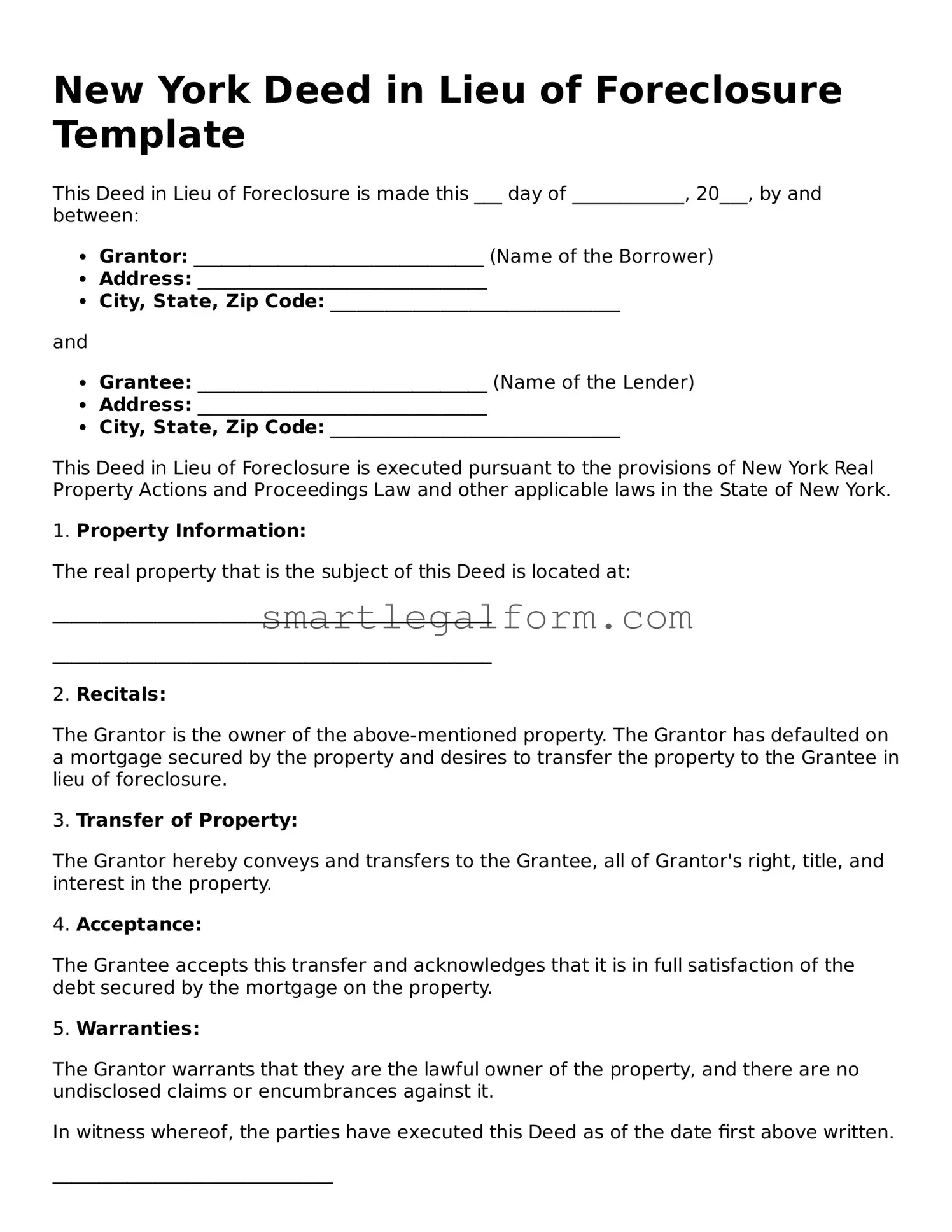New York Deed in Lieu of Foreclosure Template
This Deed in Lieu of Foreclosure is made this ___ day of ____________, 20___, by and between:
- Grantor: _______________________________ (Name of the Borrower)
- Address: _______________________________
- City, State, Zip Code: _______________________________
and
- Grantee: _______________________________ (Name of the Lender)
- Address: _______________________________
- City, State, Zip Code: _______________________________
This Deed in Lieu of Foreclosure is executed pursuant to the provisions of New York Real Property Actions and Proceedings Law and other applicable laws in the State of New York.
1. Property Information:
The real property that is the subject of this Deed is located at:
_______________________________________________
_______________________________________________
2. Recitals:
The Grantor is the owner of the above-mentioned property. The Grantor has defaulted on a mortgage secured by the property and desires to transfer the property to the Grantee in lieu of foreclosure.
3. Transfer of Property:
The Grantor hereby conveys and transfers to the Grantee, all of Grantor's right, title, and interest in the property.
4. Acceptance:
The Grantee accepts this transfer and acknowledges that it is in full satisfaction of the debt secured by the mortgage on the property.
5. Warranties:
The Grantor warrants that they are the lawful owner of the property, and there are no undisclosed claims or encumbrances against it.
In witness whereof, the parties have executed this Deed as of the date first above written.
______________________________
Grantor Signature
______________________________
Grantee Signature
______________________________
Witness Signature
______________________________
Witness Name (Printed)
______________________________
Date
